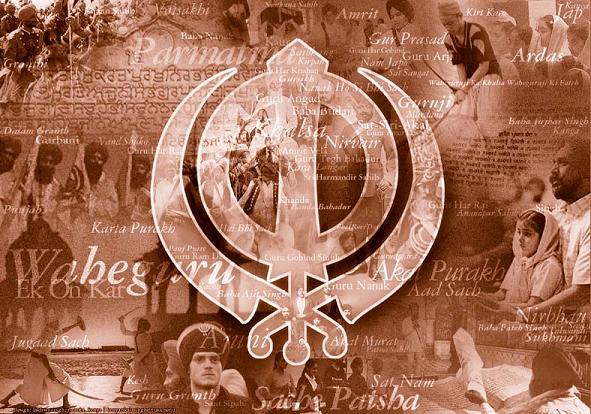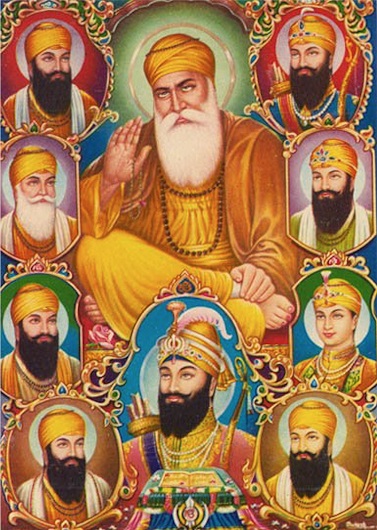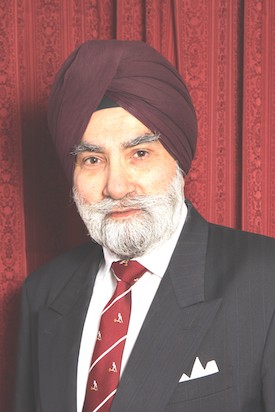Synopsis of an article by Prof. Prabhjot Kaur
(Note: The original article by Prof. Prabhjot Kaur was published in the Abstract of Sikh Studies (ASS) some years ago. It was a fresh approach to understanding the status of women in Sikhism. Have uncovered this item in the system but do not have any reference to the ASS issue. Perhaps someone can let me know in due course. These notes were first used for a short talk at a UK event organised by the Sikh Women's Alliance. Gurmukh Singh)
“It has been said that the status accorded to women is the touchstone of the civilization of society.”
(Prof Prabhjot Kaur)
Women’s Liberation Movement, started by Elizabeth Cady Stanton in the year 1848 in Seneca Falls near New York, received a further boost with the setting up of a UN Commission on the status of women. Much has been done to secure equal rights and opportunities for women worldwide. Much has been achieved. The question, which Prof Prabhjot Kaur asks is, if better status for women has made today’s society more civilized than before? Her answer is a “definite no”.
She argues that the divorce rate has increased manifold, there are increasingly more broken families, and, despite much progress in all other spheres, the institution of the family is threatened as never before. Why is this so when the lot of women, who have always been the pivot of the family unit, has improved so much?
For the answers to these modern problems, Sikh scholars turn to Gurbani, the Word or the knowledge revealed to the Gurus and other devotees of God, the Bhagats. Prabhjot Kaur does not repeat the much quoted passages from Gurbani which questions “Why condemn women who conceive and give birth (to men); to whom men are betrothed and married and who give birth to kings?” (GGS p.473) The Gurus treated women equal to men and the Third Guru, Guru Amardas, even appointed women preachers. Prabhjot Kaur’s approach is from an entirely different angle. Her view based on Gurbani research is that women naturally possess the qualities necessary for getting closer to the Lord Creator Being.
With reference to the relationship between the human soul and the Lord, all human beings (men and women) have been called “naar” (woman or wife) in Gurbani. Through communion with the Lord, human soul is constantly seeking the status of a “sohagan” – one who is beloved of the Lord, decribed as “kanth” (Husband) in Gurbani. This is a constant theme of Gurbani. As in a worldly husband/wife relationship, certain qualities need to be cultivated to reach this harmonious relationship. It is in this respect that women are likely to have an advantage over men; for they are more likely to possess the qualities necessary to become “sohagan”, the beloved of the Lord.
In Gurbani, a woman who becomes the “sohagan” has been referred to as
“batees sulakhani” i.e. she has thirty-two qualities, which according
to Bhai Kahn Singh Nabha’s “Mahan Kosh” are: beauty, cleanliness,
modesty, humility, concord, observance of religion, intelligence,
knowledge, service, compassion, truth, dedicated love of spouse, purity
of mind, patience, frugality, beneficence, sobriety, chivalry, active
habits, house decoration, respect of elders, proficiency in music,
poetry, painting, domestic science and embroidery, respectful attention
to guests, and bringing up children.
All men and women can be “sohagan” if they have the qualities necessary to please the Lord. Therefore, the man/woman division is a mere technicality in this respect – it matters not whether one has the body of a man or a woman. The path to reach the Lord for both is the same. Men and women (physical beings) enjoy equal status in Gurbani. Indeed, if we go by the “batees sulakhni” description of a “suhagan” – qualities in a woman which please the husband, or qualities necessary in a human soul to please the Lord – then women are more naturally bequeathed with those qualities than men. Or, men would require a greater effort to acquire those qualities found more naturally in women. Reading Prabhjot Kaur’s article, one gets the impression that women have an edge over men in this respect. More so as the new age of science and technology makes the masculine attributes less relevant to the question of men/women parity.
It seems that today’s woman is demanding equality with men under the mistaken belief that men are superior to women; while Gurbani says that it is the woman who is “the best of the best” (“Sabh parvare mahe sresht”). So, “it is the man who is expected to follow the footsteps of the woman”! For the man must be guided by the “sohagan” – in the worldly sense, the woman who has won the heart of her husband. Those same qualities found in a “sohagan” need to be cultivated by all (regardless of the men/women bodies they occupy) to win the Lord’s attention (Nadar).
Socially, and in the family, a woman who is “batees sulakhnee” is able to create a peaceful and heavenly environment. With her qualities (see above) she is able to guide others, and through her roles as mother and wife (and other family relationships) she is able to change the destiny of a family. A woman must have own personality and must be bold and chivalrous when required. Otherwise, the situation described in Gurbani would arise when “Women have become submissive, while men have become tyrants.” (GGS p. 142) Sikh women like Mata Sundariji (wife of the Tenth Guru, Guru Gobind Singh) who took a keen interest in Sikh polity after the Guru’s death, and Mata Bhago leading Sikh warriors in battle, have shown that women should be bold and take action when the situation arises.
Prof. Prabhjot Kaur feels that Gurbani teachings about the true role of women can show the way ahead for the global community. Women need not compete with men but use their feminine, natural God-given attributes to improve family and social life. She quotes Dr. H B Dinesh in support, “….the new age will be less masculine and more permeated with feminine ideals – or to speak more exactly, will be the age in which masculine and feminine elements of civilisation will be more properly balanced.”.
The family life advocated in Guru Granth Sahib will become increasingly more relevant to the resolution of modern family and social problems. In the age of science and technology the “shifting of the scales” is creating a more level playing field for men and women; maybe even shifting in favour of women in the long run. Seeking equality with men is not the answer for women; rather, they should cultivate and use the natural qualities with which they are naturally gifted to pave the way for a better future for men and women – all “suhagans” of the One Lord.
© Copyright Gurmukh Singh (U.K.)
E-mail: sewauk2005@yahoo.co.uk
Please acknowledge quotations from this article
Articles may be published subject to prior approval by the author


